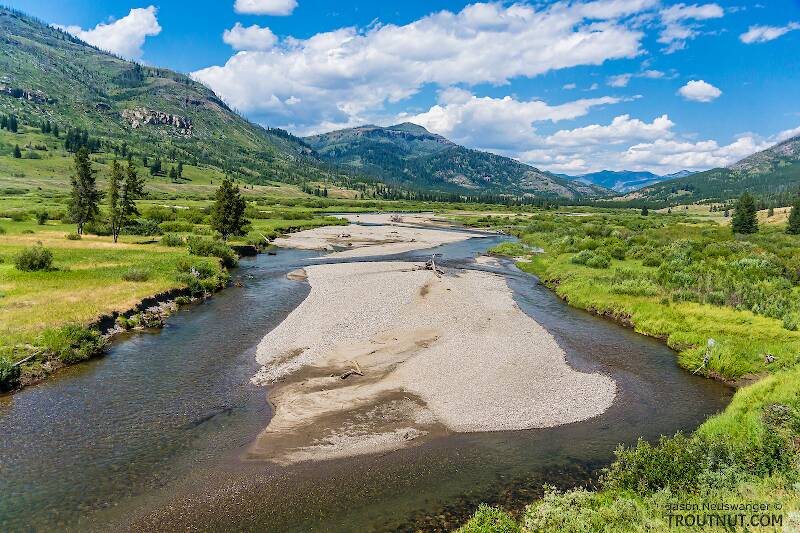
Salmonflies
Pteronarcys californica
The giant Salmonflies of the Western mountains are legendary for their proclivity to elicit consistent dry-fly action and ferocious strikes.
Featured on the forum

Troutnut is a project started in 2003 by salmonid ecologist Jason "Troutnut" Neuswanger to help anglers and
fly tyers unabashedly embrace the entomological side of the sport. Learn more about Troutnut or
support the project for an enhanced experience here.
Catskilljon on Feb 5, 2015February 5th, 2015, 12:51 pm EST
I am really enjoying these little stories, and have at times found my self "wishing" for different times...like the grass is always greener philosophy. Truth be told, we live in a pretty good era to be flyfishing.
Being a Catskill guy, I wished I was around to have been able to hang out at Darbee's shop and shoot the poop with McClain and Bill Kelly, have a bite to eat at the Antrim and see the Catskills during the 60's-70's. One must keep in mind though the quality of the fishing back then and earlier. Pollution was a huge problem, raw sewage and industrial by-products being flushed into the streams. The quality of fish were not as good as a result, and many streams suffered. Today, with all the effort on conservation and organizations like TU and FUDR, we are seeing healthier fish and cleaner water, better hatches and the continuance of the above stated.
It would have been cool to try a "new" graphite rod, right when they were introduced, but I am happy in our era too! CJ
Being a Catskill guy, I wished I was around to have been able to hang out at Darbee's shop and shoot the poop with McClain and Bill Kelly, have a bite to eat at the Antrim and see the Catskills during the 60's-70's. One must keep in mind though the quality of the fishing back then and earlier. Pollution was a huge problem, raw sewage and industrial by-products being flushed into the streams. The quality of fish were not as good as a result, and many streams suffered. Today, with all the effort on conservation and organizations like TU and FUDR, we are seeing healthier fish and cleaner water, better hatches and the continuance of the above stated.
It would have been cool to try a "new" graphite rod, right when they were introduced, but I am happy in our era too! CJ
Quick Reply
Related Discussions
Topic
Replies
Last Reply


